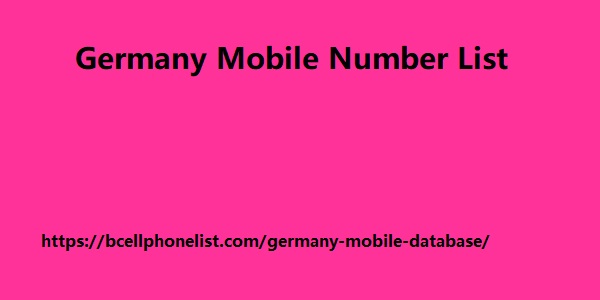Post by account_disabled on Mar 10, 2024 21:17:33 GMT -6
Described below: 1. Request and drafting of the contract: the process begins with the request and drafting of the contract . With a clm, it is possible to access predefined templates and clauses, which speeds up and standardizes the writing process. Additionally, clm enables real-time collaboration between team members tasked with drafting the contract, making it easy to review and incorporate feedback. 2. Negotiation and review : once the initial contract has been drafted, the negotiation stage begins. The clm allows the contract to be sent to the counterparty for review and comments. Both parties can make modifications and suggestions directly to the document, which facilitates communication and resolution of differences between both internal and external parties. 3. Tracking and version control : during the negotiation process, it is common for multiple revisions and changes to be made to the contract. The clm maintains a version history, making it easy to track modifications made at each stage. This allows better visibility and control over the changes made, avoiding confusion and errors.
Approval and signature : once both parties reach an agreement, the clm automates the process of approval and electronic signature of the contract. Parties can electronically sign the document through the platform, eliminating the need to print, mail, or Germany Mobile Number List physically meet. This speeds up the process and reduces the time needed to complete the negotiation. 5. Post-signature management: after the contract is signed, the clm remains useful in managing and monitoring the contractual terms and obligations. The platform can generate automatic alerts and reminders for meeting deadlines, notify pending renewals and facilitate the management of contractual clauses and commitments. 6. Analysis and reporting: a clm provides analysis and reporting tools that allow evaluating the performance and efficiency of contracts. You can obtain information about contract negotiation times, the most common points of friction, the most successful contracts, among other relevant data.

These analyzes can help identify areas for improvement and optimize future negotiations. E-book cover you will also like our article: clm as a management tool in the continuous improvement process how a clm avoids delays in contract negotiation any negotiation process involves managing a large volume and types of contracts and documents: initial drafts, contract reviews, meeting minutes, emails, annexes, etc. Often, different versions of the same documents are handled between parties who are negotiating inside or outside the company. Carrying out an unclear negotiation process can result in financial risk and legal disputes between the parties. Contract management: the hidden cost of endless negotiation graphic: there are still few companies that have specific software for contract document management. This forces you to invest valuable time and effort in managing contractual documents. A large number of company documents are lost or filed incorrectly . As a result, according to a censuswide/sharp study, employees spend 13 minutes each day searching for documents on their company's servers.
